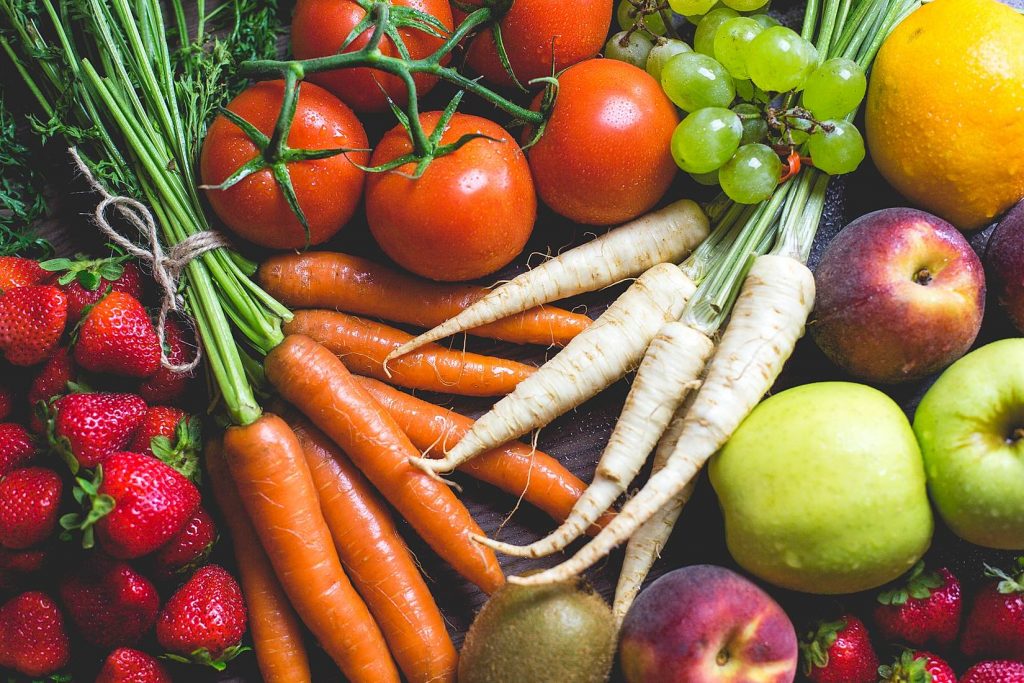Skin Health – Part A-Nutrition
I have seen numerous clients over the years whose skin (and health) is being affected by what they eat. The skin is an organ, like the brain and heart, and so needs good food to nourish it. This is especially true because the skin is the largest organ in the human body. When it is stretched out it averages two square meters and makes up around 15% of your total weight. In today’s column I will address what you should be eating for skin health and to help slow down ageing. In the next blog I’ll discuss what not to eat for your skin.
What to eat
Fruits and vegetables
- Fruits and vegetables (especially vegetables) are essential in your diet, not just for skin health, but for many reasons. They are rich in antioxidants (e.g. vitamin C) which mop up damaging molecules called free radicals. Free radicals can harm skin (and other) cells leading to premature aging. In addition, the fibre in vegetables is essential for preventing blood sugar swings that prematurely age skin. The average American diet consists of only 5% vegetables and fruit (we kiwis are a bit better but not much!. The correct percentage for health is at least 50% of your plate should be vegetables. For those of you who only eat one or two types of vegetables, good on you for eating some instead of none, but variety is the key here. Think of a rainbow of vegetable colours on your plate, at least over the course of the day if not at every meal. An example of a rainbow of vegetables is strawberries, carrots, grapefruit, spinach, blueberries.
Carbohydrates
- Carbohydrates (aka carbs) provide the main fuel source for skin cells. Carbs are found in most foods but there are bad and good carbs. An example of a bad carb would be standard table sugar or even excessive fruit (more than 2-3 pieces/day). Examples of good carbs are wholemeal bread/pasta, vegetables and fruit (less than 2 pieces fruit/day), breakfast cereals, rice, peas, lentils, and milk.
Fats
- Good fats (Omega-3 fatty acids) such as those found in wild salmon, avocado’s, eggs, and certain nuts (e.g. walnuts) help maintain the skin barrier so that pollutants and toxins are kept out. Good fats are also essential food for making new skin cells, reducing inflammation (damage) in the skin, reducing sun (UV) damage and aging.
Minerals
- Minerals such as zinc and selenium are important for skin health also. Zinc stabilizes skin cells, is involved in growing new cells and lastly helps to reduce the effect of those damaging free radicals mentioned above. Zinc can be found in oysters, red meat and poultry mainly but other sources include nuts, beans, fortified breakfast cereals, some other seafood’s (e.g. lobster), whole grains, and dairy products. Selenium helps to protect the skin from free radical and UV damage. Selenium is found in most protein containing foods, e.g. seafood, peas and beans (legumes), lean meat, eggs, seeds, nuts (especially Brazil nuts), and soy.
Organic foods
- Organic food are better in many ways. They contain more antioxidants than non-organic food and they are not sprayed with chemicals, e.g. pesticides that damage our skin (and body). Organic (grass fed, free range) meats contain at least 7 times more good fats (omega 3-fats) than bad fats (most omega 6 fats) compared to factory farmed meat. Factory meat also contains hormones that can create havoc in our skin (and body). If you have to eat food that isn’t organic then try to peel your fruit and vegetables and remove fat from meat and limit your intake of it.

